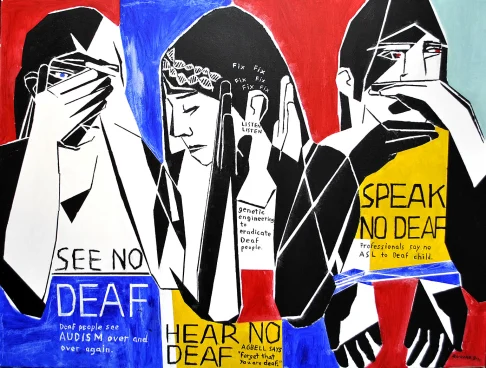I am always looking for great ways to incorporate more culture and communication opportunities in my classroom. I want to be able to deliver highly comprehensible input that is compelling while discussing global issues. Culture can be difficult to include in the classroom while staying in the target language. Using pictures is a great way to get small chunks of information into every lesson.

Picture talks can be one of the most substantial tools at your disposal. Images say a lot, are easy to find and can create powerful emotions within our students. I love using picture talks to build empathy, create global understanding and infuse culture into lessons. Picture talks are a lot like movie talks but on a smaller scale.
Using images as a tool in the language classroom has been around forever. Most recently it has been a huge buzz word in the CI community. However, you don’t need to be a CI teacher to make these picture talks work for you. They are an amazing strategy for non-CI teachers. Picture talks can reinforce already learned vocabulary and they can also be an excellent way to introduce new vocabulary and grammar.
Picture talks are low-prep, user-friendly, and they carry a big impact on students. Best of all, they are a great instrument for keeping student interest. They can be anything from art to still images of people or scenery.

Here is an easy way to create a picture talk with your students
- Choose an image that will incorporate the things (people, pace, actions) you want to teach. Say you want to teach about the isolation may deaf students face when placed in a mainstream school. You would find a picture that would represent this.

2. You will want to choose the words you want to teach from the image being used. Keep a vocabulary list for yourself to make sure you get in all of the words. You can give students a list too or you can let students self-create the list by writing down what they learned from the picture talk.
3. Project the picture and make statements about the image while pointing and pausing. Then pose questions about the picture and things you have stated about the picture. For example, you teach the word ISOLATED. You state that the boy is isolated from his peers. You can ask students a question like, “How does the boy feel?” The expectant answer would be ISOLATED. Restate what students say using proper language structure. Make sure students know what the words mean by asking questions that will require them to respond (not yes/no questions).
4. Along with discussing the image, you will want to personalize the questions to draw students in and hold their interest. Ask students “How do you feel during the school day?” and “Do you ever feel isolated and alone?” Personalizing the lesson increases retention of what is being taught. Let’s face it, teenagers love to talk about themselves.
5. Create higher-level thinking by posing questions that require cognitive skills. Ask things like, “How could the peers better communicate?” and “How can the feelings of isolation be resolved?”
6. You can incorporate recycled vocabulary into this lesson, but your main focus should be on the new terms you want students to know. It will be easy for a student to say “The boy is sad.” You want to expand language when doing a picture talk.
Tips
Of course there are a lot more ideas you can use incorporating pictures. But for now, we can start with this simple formula and build on it. Just remember to
- go slowly
- personalize
- keep your communication comprehensible
- correct errors by modeling
- don’t overload on new terms
Get Social
Join the conversation in our Facebook group.
Don’t miss out on a sale, FREEBIE, or new product. Follow Creative ASL Teaching on TpT.








